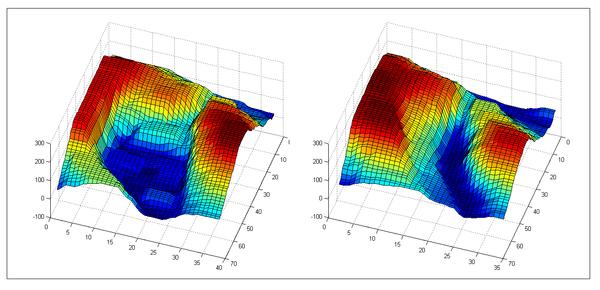A fatigue detection device to help keep your eyes on the road

Joonas Tikkanen / Flickr Creative Commons
SUMMER SERIES (3) - An EPFL student has developed a video analysis algorithm able to estimate the level of a driver’s fatigue based on the degree of eyelid closure. PSA Peugeot Citroën, a project partner, has built a prototype in order to test it in real driving conditions.
Nearly a third of highway accidents are caused by fatigue. Nowadays, there exist several attention detection systems for drivers, e.g.: based on the loss of vehicle control. Marina Zimmermann, as part of her master thesis in electrical and electronic engineering and in partnership with PSA Peugeot Citroën, has focused directly on drivers and their state of wakefulness. She developed an algorithm able to measure the degree of eyelid closure by using a single camera and thus avoiding invasive methods.
One of the indicators most frequently used to determine the state of a driver’s fatigue is "PERCLOS" (percentage of eye closure). It measures the percentage of time that the pupil is at least 80% covered by the eyelid during a predetermined timespan. The challenge was to measure this indicator in real time, keeping the drivers’ eyes on the viewfinder and bearing in mind that they can turn their head, wear glasses, drive during the night, cross through tunnels etc.
The Signal Processing Laboratory 5 (LTS5) at EPFL is specialized in face recognition, monitoring and analysis techniques and has man-machine interfaces capable of keeping track of a driver’s face in real time. This is achieved by placing a small infrared camera behind the wheel. In order to carry out the project -initiated by the Transportation Center and carried out at LTS5- Marina Zimmermann developed an eye-analyzing module by creating an algorithm able to disregard possible light effects as well as the drivers’ different eye morphologies. She then established a 3D profiling of the eye and eyelids so as to distinguish an open one eye from a closed one. Lastly, she had to optimize her methodology to make it possible for it to run in on-board vehicle computers with limited computing power in real-time conditions.

--- 3D representation of an opened and closed eye - the detector is able to interprete them ---
Industrialization potential
The first tests carried out under real conditions showed good reliability. However, the system remains highly dependent on the frame rate as unconscious blinks of the eye occur within 100 to 150 milliseconds. "The proposed algorithm is sufficiently robust and simple to run on a standard camera. It will be able to combine the degree of eyelid-opening information together with other data - like yawning or head tilt- provided by the already existing face tracking system, "said Jean-Philippe Thiran, head of LTS5 and supervisor of the student’s master project.
As it stands, the project’s industrialization potential has already caught the eye of PSA Peugeot Citroën, project partner, which will integrate the device into a first stage test vehicle for evaluating its performance in real conditions.
About
PSA Peugeot Citroën has setup an innovation unit on the EPFL campus since 2011.
EPFL’s Transportation Center is in charge of fostering research projects dealing with transportation and mobility through both, private and public partnerships.